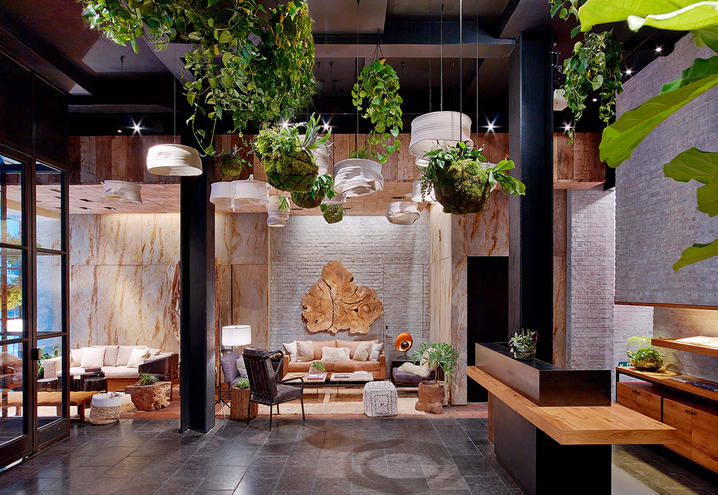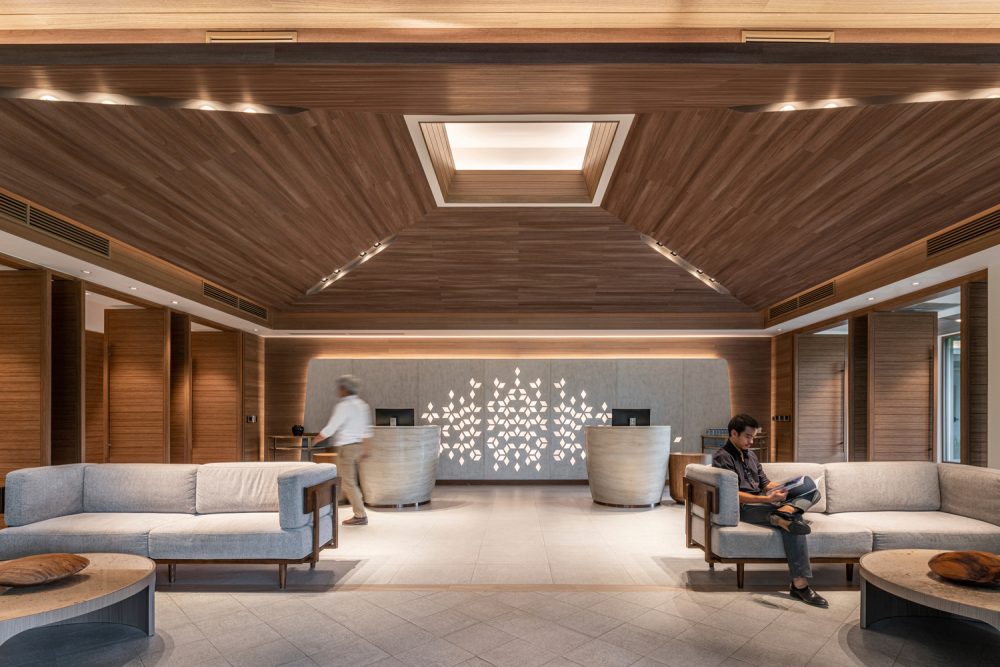Health and Wellness Interior Design for Seniors: Creating Spaces for Well-being
Exploring the realm of Health and Wellness Interior Design for Seniors opens up a world where design meets functionality to enhance the lives of our beloved seniors. Let's delve into how thoughtful interior design can make a significant impact on their overall well-being and quality of life.
Overview of Health and Wellness Interior Design for Seniors

Designing interiors specifically tailored for senior health and wellness is crucial in creating a safe, comfortable, and supportive environment for aging individuals. These design elements can greatly impact the overall well-being and quality of life for seniors.
Importance of Designing Interiors for Senior Health and Wellness
- Proper lighting: Adequate lighting is essential for seniors with declining vision. Well-lit spaces can prevent falls and accidents.
- Safe flooring: Non-slip flooring materials reduce the risk of slips and falls, which are common among the elderly.
- Accessible layout: Designing spaces with wide doorways, grab bars, and ramps can improve mobility and independence for seniors with limited mobility.
Key Considerations when Designing Spaces for Senior Health and Wellness
- Comfortable furniture: Choosing ergonomic and supportive furniture can help seniors with mobility issues and provide a comfortable place to rest.
- Color and contrast: Using colors that are easy on the eyes and provide good contrast can aid seniors with visual impairments.
- Noise reduction: Minimizing noise levels in living spaces can promote a calm and peaceful environment for seniors.
Benefits of Incorporating Health and Wellness Principles into Interior Design for Seniors
- Improved quality of life: Well-designed spaces can enhance the physical, mental, and emotional well-being of seniors, leading to a better overall quality of life.
- Promotes independence: Senior-friendly interiors can support independence and autonomy, allowing seniors to age in place comfortably.
- Enhanced safety: By incorporating safety features into the design, such as handrails and non-slip surfaces, the risk of accidents and injuries can be minimized.
Creating Safe and Accessible Spaces
Creating interior spaces that are safe and accessible for seniors is crucial for their well-being and comfort. By incorporating specific design elements and features, designers can enhance the overall quality of life for senior occupants.
Enhancing Safety for Seniors
- Install grab bars in bathrooms and near stairs to prevent slips and falls.
- Use non-slip flooring materials to reduce the risk of accidents.
- Ensure adequate lighting throughout the space to improve visibility.
- Avoid clutter and tripping hazards by maintaining clear pathways.
Importance of Accessibility Features
Accessibility features play a crucial role in senior-friendly interior design by ensuring that spaces are easy to navigate and use for individuals with limited mobility or other physical challenges.
Making Spaces More Navigable
- Widen doorways and hallways to accommodate wheelchairs and walkers.
- Use lever-style door handles and faucets for easier operation.
- Consider adjustable height countertops and cabinets for varying needs.
Incorporating Universal Design Principles
Universal design principles focus on creating environments that are accessible to people of all ages and abilities. By incorporating these principles, designers can effectively cater to the diverse needs of seniors.
- Install lever handles on doors and faucets for easy operation.
- Include contrasting colors for better visibility and orientation.
- Ensure that furniture is stable and easy to move around for individuals with mobility issues.
Incorporating Natural Light and Biophilic Design

When it comes to designing interior spaces for seniors, incorporating natural light and biophilic design elements can have a significant impact on their overall health and well-being.
Maximizing Natural Light Exposure
Maximizing natural light exposure in design for senior wellness is crucial as it can help improve mood, regulate sleep patterns, and enhance cognitive function
- Position seating areas near windows to allow for maximum sunlight exposure.
- Use light-colored window treatments or sheer curtains to let in more natural light.
- Consider skylights or solar tubes to bring in additional light to spaces with limited windows.
- Utilize reflective surfaces like mirrors to bounce light around the room.
Incorporating Biophilic Design Elements
Biophilic design aims to connect occupants with nature to promote well-being. Here are some examples of incorporating biophilic design elements in interior spaces for seniors:
- Integrate indoor plants to improve air quality and create a sense of nature indoors.
- Use natural materials like wood and stone to bring elements of the outdoors inside.
- Incorporate nature-inspired artwork or photographs to evoke feelings of calm and relaxation.
Creating a Calming Environment
Integrating nature-inspired elements can help create a calming and rejuvenating environment for seniors. Here are some tips to achieve this:
- Choose a color palette inspired by nature, such as blues, greens, and earth tones, to evoke a sense of tranquility.
- Add elements like water features or nature sounds to create a soothing ambiance.
- Create designated outdoor spaces or indoor gardens for seniors to connect with nature directly.
Ergonomic Furniture and Assistive Technology

When it comes to designing interior spaces for seniors, the choice of furniture and technology plays a crucial role in ensuring comfort, safety, and overall well-being.
Importance of Ergonomic Furniture
Ergonomic furniture is designed to provide maximum comfort and support, especially for individuals with limited mobility or physical challenges. For seniors, having ergonomic furniture can help reduce the risk of musculoskeletal issues, improve posture, and enhance overall quality of life.
- Adjustable beds and chairs that cater to individual needs and preferences.
- Lift chairs that assist seniors in standing up or sitting down with ease.
- Recliners with lumbar support to relieve back pain and promote relaxation.
- Grab bars and handrails integrated into furniture pieces for added stability and support.
Benefits of Assistive Technology
Assistive technology can greatly enhance the quality of life for seniors by promoting independence, safety, and convenience within their living spaces. These technologies are designed to assist with daily tasks, enhance communication, and improve overall well-being.
- Smart home devices such as voice-activated assistants, smart thermostats, and automated lighting systems for easy control and accessibility.
- Fall detection systems and emergency response buttons for immediate assistance in case of accidents or emergencies.
- Mobility aids like stairlifts, walk-in tubs, and adjustable height countertops to facilitate movement and accessibility throughout the home.
- Medication management systems with reminders and alerts to ensure seniors take their medications on time.
End of Discussion
In conclusion, Health and Wellness Interior Design for Seniors is not just about aesthetics; it's about creating spaces that nurture and support the health of our elderly population. By incorporating these principles, we can ensure that every senior enjoys a safe, comfortable, and uplifting environment that promotes wellness.
FAQ
How can interior design impact the well-being of seniors?
Interior design can influence seniors' mood, comfort, and overall quality of life by creating spaces that are safe, accessible, and aesthetically pleasing.
What are some key considerations when designing spaces for senior health and wellness?
Key considerations include safety features, accessibility, natural light exposure, ergonomic furniture, and the integration of assistive technologies.
Why is biophilic design important for seniors?
Biophilic design connects seniors to nature, reduces stress, and promotes a sense of calm and well-being, which is essential for their health.